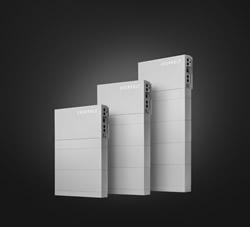Using a specialized wake model, 3TIER is able to help clients take into account the impact of external wakes on the final net energy numbers they must take to their project stakeholders and financing partners.
Solving Turbine Wake Issues in Dense Development Areas
Francesca Davidson | 3TIER
At one time or another, just about everyone in the wind industry has seen the now famous image of the Horn’s Rev offshore wind farm in Europe’s North Sea. The effect one turbine has on the next, and the next, and on down the line can be quite dramatic – so noted at some projects that turbines furthest downstream from the wind, produce little to no energy and simply struggle to operate in intense turbulences, prematurely wearing down turbine hardware. Wake blocking effects have a huge impact on many wind project considerations: net energy estimates for financing, turbine spacing for project engineering, and operational strategies once the project is running.
In recent years, wake modeling has become a topic of ever-greater concern in the pre-construction assessment of a project, causing headaches for wind energy developers, financers, and consultants alike. With the breakneck pace of wind development in India, particularly in the wind rich province of Tamil Nadu, the industry now has a new challenge to contend with. Not only do developers need to consider the wake effects of their own turbines, but those from nearby projects.
While turbine density like that seen in Tamil Nadu is a long way off for most of the world, one renewable energy assessment and forecasting provider has already developed ways to examine and evaluate the impacts of external waking effects from neighboring projects.
“Our clients need the most accurate net energy estimates possible to secure critical project financing and make sure they are investing in the right location before committing huge capital investments,” said Dr. Pascal Storck, 3TIER chief operating officer. “With how rapidly the Indian market is growing, we not only have to take into consideration standard methods we use in the rest of the world, but must remain agile and adapt our approach to the demands and unique conditions of our client’s project sites.”
As part of its comprehensive wind assessment studies, 3TIER’s standard approach is to complete a model simulation of up to 30+ years, estimating hourly wind speed and power on a turbine-by-turbine basis for the entire project layout. When there are large clusters of turbines nearby, 3TIER also estimates hourly wind speed for the entire time period of the model at every single turbine in the surrounding area. Using a specialized wake model, 3TIER is able to help clients take into account the impact of external wakes on the final net energy numbers they must take to their project stakeholders and financing partners.
The content & opinions in this article are the author’s and do not necessarily represent the views of AltEnergyMag
Comments (0)
This post does not have any comments. Be the first to leave a comment below.
Featured Product


